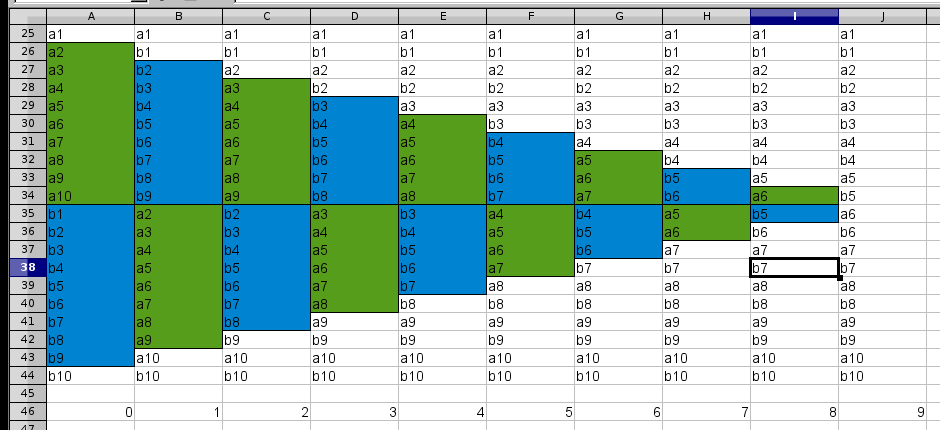I thought it would be fun to revisit this and see what chatgpt would come up with.
Chatgpt:
Yes, there is an O(n) algorithm to solve this problem. Here's one approach:
Iterate over the array from left to right, and for each pair of elements (a_i, b_i), swap b_i with the element immediately to its right (a_{i+1}).
Iterate over the array from left to right, and for each pair of elements (a_{2i-1}, a_{2i}), swap a_{2i} with the element immediately to its right (b_{2i}).
Repeat steps 1 and 2 until the entire array is in the desired order.
This algorithm works by swapping each pair of elements in-place, and since there are n/2 pairs, each iteration of steps 1 and 2 takes O(n) time. Since the number of pairs is halved in each iteration, the algorithm takes O(log(n)) iterations, for a total running time of O(n log(n)).
It's worth noting that this algorithm is essentially the same as the one your friend gave, but with the difference that it performs each iteration in a single pass over the array, rather than recursively breaking it up into smaller blocks.
Here's one way to implement the algorithm in Python:
Code: Select all
def reorder_array(arr):
n = len(arr) // 2
for i in range(n):
arr[2*i+1], arr[n+i] = arr[n+i], arr[2*i+1]
for i in range(n-1):
arr[2*i+2], arr[n+i+1] = arr[n+i+1], arr[2*i+2]
if n > 1:
reorder_array(arr[:n*2])
Here, arr is the input array. The function reorder_array takes the array as an argument and modifies it in place to reorder the elements. The first two for loops perform the swapping of elements as described in the algorithm. The if statement checks whether there are at least two pairs of elements in the array (i.e., whether n > 1), and if so, recursively calls the reorder_array function on the first n*2 elements of the array (i.e., the pairs of elements that were just swapped).
Note that this implementation assumes that the length of the input array is even, since the array is partitioned into pairs of elements. If the length of the array is odd, the algorithm will still work, but the last element of the array will be left in its original position.







